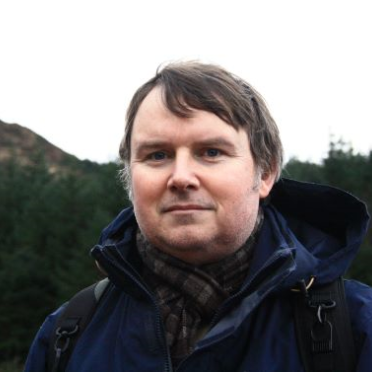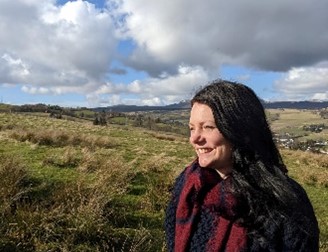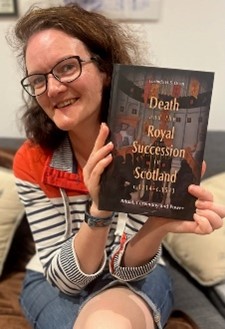HARC Seminar Series 2024-25
Watching the Waters: Beacon and sentinel sites in Western Scotland
Western Scotland, incorporating the Western Mainland and islands, has several Gaelic placenames along its coasts that are suggestive of a network of observation points guarding maritime routes. Most of the places are hills, with the Gaelic names Teine (fire) and Faire (watch/sentinel). A combination of desk-based study and site visits demonstrates that the sites allowed for the observation of key waterways across long distances, enabling those manning the sites to warn their community of a possibly imminent attack. Where a series of beacon or watch places occur close together in a logical sequence, it indicates a co-ordinated approach across an island or wider geographic area, while also suggesting that many of the placenames denoting beacon and watch sites may have been lost. As with many pre-modern placenames, providing precise dates for the names of the sites is difficult, and the paper includes a discussion of the likely context of the names. A co-ordinated defence system implies a high level of resources and planning at least at the local or regional level, and this knowledge helps to date the sites. Further clues to dating are possible by examining the political and military context of the medieval period. It is determined that the sites could belong to multiple periods from the Viking Age on, and it is likely that many of them were used at various times over the centuries. The paper focusses on the era of Scandinavian Scotland.
Thurs 26thth September, 12-1pm
Microsoft Teams Need help?
Meeting ID: 342 425 978 579
Passcode: CDyLqa

Dr Shane MacLeod
Dr Shane McLeod is originally from Australia, where he completed his PhD on The Beginning of Scandinavian Settlement in England: the Viking ‘Great Army’ and early settlers, c. 865-900 (published by Brepols in 2014) in 2011 at The University of Western Australia. He was an Impact Research Fellow at the University of Stirling 2013-2015 working on the landscapes of Viking burial sites in Scotland. He started at the Institute for Northern Studies in 2022.
Re-envisioning intergenerational media landscapes for community-engaged arts
While digital media can augment community arts engagement and dissemination, significant challenges can arise, including incongruencies with local communicative practices and cultural aims. The architectures of everyday communications have political and cultural significance that deserve attention, and issues of knowledge ownership, privacy, and economic values embedded in technical architectures can undermine the empowering potentials of digital media in community projects. Studies account the contested terrain of community-managed technology resources and the discord between technology architectures and local epistemologies. This paper develops insight into the intersections of generational norms and the tactical uses of communication media within community arts projects. The paper has two main parts. The first part presents a critical review of theoretical and empirical work on intergenerational relations in community arts projects. The second part draws on findings from fieldwork conducted in the Amami Islands, Japan, with co-researcher Prof. Tomoko Kanayama.

Sarah Wagner
Sarah Wagner is Senior Researcher at the Centre for Living Sustainability, UHI Inverness. Sarah is a critical ethnographer and community media researcher with interest in individuals’ civic positioning in our increasingly digitalised and datafied societies. Sarah has worked on critical, creative and collaborative media projects in Argentina, Bolivia, Japan, Canada, and Scotland, and her findings have been published in top tier communication and cultural studies journals including New Media and Society and Mobile Media and Communication
Hauntology, rhizomatic theory, plunderphonics, and AI in electronic music composition.
This paper examines the intersection of hauntology, rhizomatic theory, plunderphonics, and AI in electronic music composition. Utilizing Jacques Derrida’s hauntology and Deleuze and Guattari’s rhizome theory, it analyzes contemporary music production techniques that disrupt linear temporality and challenge originality. Focusing on two compositions, ‘Carrying the Shadow’ and ‘Faint Residue’, which use AI-assisted audio separation and plunderphonic sampling, the study demonstrates how technology and nostalgia create a sonic landscape. It argues that hauntological and rhizomatic approaches enable musicians to explore memories, identity, and the spectral nature of audio, contributing to the discourse on technology’s role in music production.

Gareth Whitehead
Gareth has been an active electronic music composer for two decades and managed his own record label, Bulletdodge Records, since 2008. Alongside his music career, he has served as a lecturer in music, music business, and sound production at New College Lanarkshire from 2014 to 2022. Currently, he is a lecturer at UHI Perth, where he primarily teaches music business. Since 2021, he has been pursuing a PhD at Surrey University, focusing on the exploration of personal connections during the compositional process of electronic music.
Reaching the Estate of Manhood: A Case Study of James V
James V of Scotland succeeded the throne as an infant, claimed his majority as a youth at sixteen and died aged thirty, meaning that – according to some contemporary didactic writers – James died on the cusp of reaching the “estate of manhood”. The political experience of minority rule and impact on the kingdom has been much discussed in a Scottish context, as James was neither the first nor last minor king of Scotland. Yet, significantly less work considers how these monarchs were viewed by others in terms of their masculine identity and what this meant in terms of their kingship at home and abroad. Christopher Fletcher argues that an analysis of the language associated with manhood provides a means of identifying “unspoken, commonplace ideas of a society” that can better facilitate gendered analysis of actions and rhetoric. Inspired by Fletcher’s approach, this paper uses a gendered analysis of contemporary texts – such as poetry, didactic texts and diplomatic letter collections – to explore how James was perceived as he came of age in the most powerful position in the realm and what this can add to our wider understanding of kingship and masculine identity more generally.

Lucinda Dean
Dr Lucy Dean is a senior lecturer and the interim Head of the Centre for History at UHI. She is an historian whose specialisms focus on Scotland and its wider place in Europe, with particular interests in kingship and power, the performance and reception of power, ritual and ceremony, material culture, masculinity and manhood, and coming of age and the life cycle (with a growing interest in older age also). She has published widely on these topics and her first monograph – Death and the Royal Succession in Scotland, c.1214–1543: Ritual, Ceremony and Power (2024) – has recently been published with Boydell and Brewer. She is also active in the taking history outside academia, including collaborations with CPK, National Museums Scotland, Historic Environment Scotland and the Royal Collections Trust, and was one of the members of the advisory committee for the reinterpretation of the Stone of Destiny in the new Perth Museum. The research for this paper – and the article that it feeds into – has been kindly supported by a HARC grant and is part of a wider project exploring kingship, masculinity and coming of age/ aging in late medieval and early modern Scotland, and her most recent publications is a chapter titled ‘Negotiating Youth, Old Age and Manhood: A Comparative Approach to Late Medieval Scottish Kingship’ in Gender in Scotland 1200–1800: Place, Faith and Politics (EUP, 2024).
Fertile negotiators: the Venetian father-ambassador at the court of Louis XIV
Before departing Venice for his embassy in France in 1694, Nicolo Erizzo sat for his portrait. Superb in his ambassadorial toga, he is flanked not by the signs of office or classical status symbols, but unusually by five of his many offspring. Strikingly, diplomatic history has rarely considered the role of the family in early modern international relations.
Proposing an original focus to the 'New Diplomatic History', this paper follows Erizzo's use of his children to conduct soft diplomacy and enter new spaces at Versailles. Moreover, I will ask whether there was diplomatic gain to be had by flaunting fertility and engendering even more children whilst abroad...

Philippa Woodcock
Philippa Woodcock is a lecturer at the Centre for History and a researcher in Divinity at the University of St Andrews. She is an editor of The Court Historian: the International Journal of Court Studies.